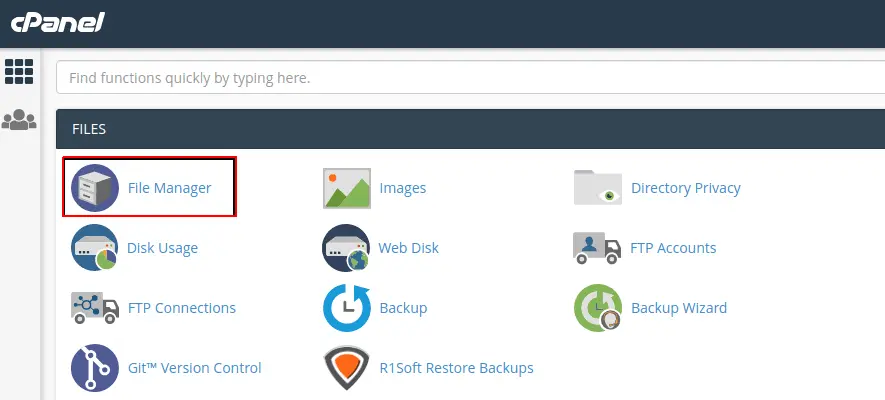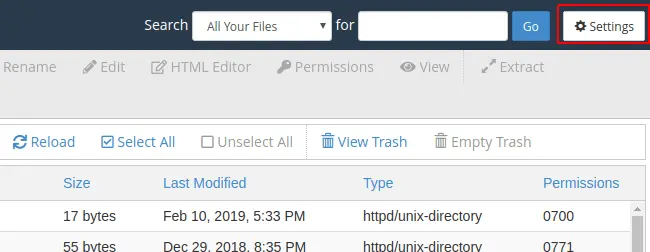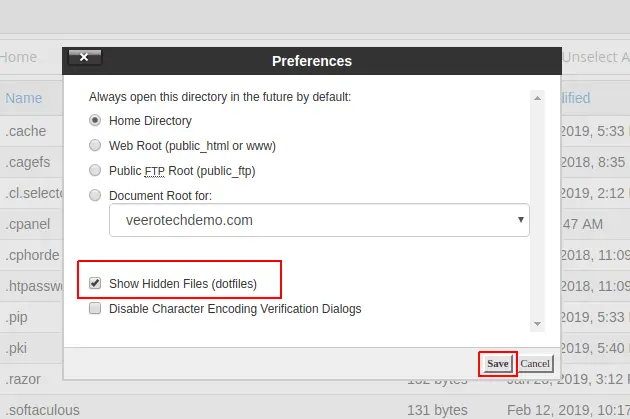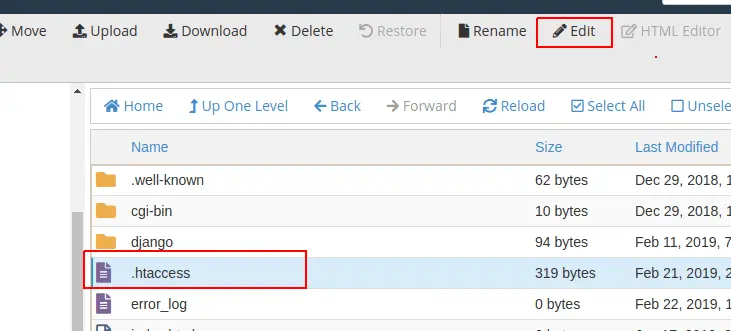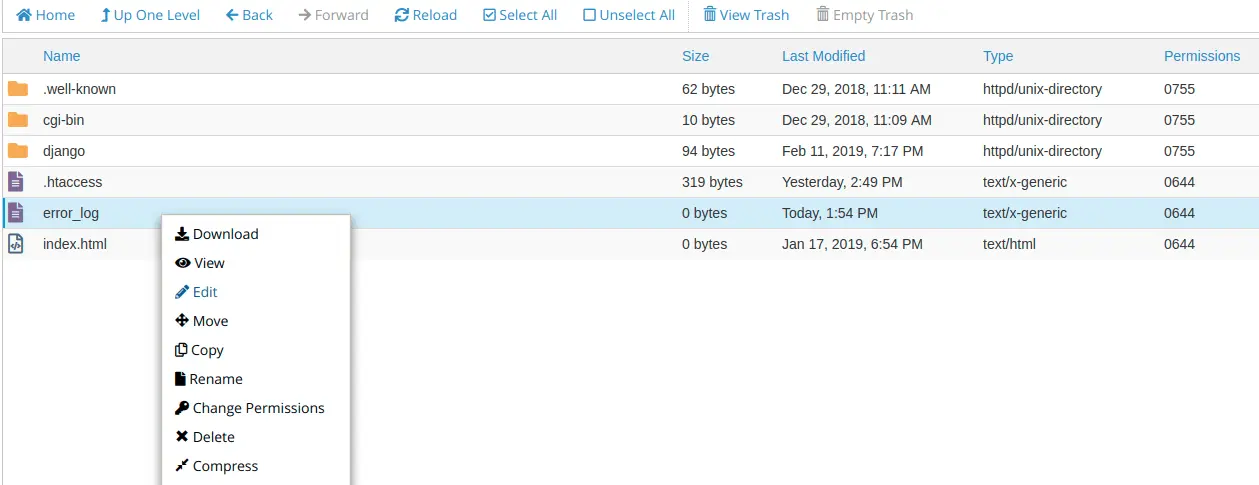This article explains how to turn off PHP error messages completely or tweak them to suit your needs.
PHP errors are generated by your websites and logged in error_log files in the directory where your PHP files are located. If you do not need the error_log file you can disable PHP error logging.
To turn off PHP error reporting, you need to add the following line to your .htaccess file to suppress any PHP error messages.
php_flag display_errors off
Quick Steps:
- Go to your cPanel account and select File Manager.
- Click on Settings, check the box Show hidden files and click Save.
- Open the .htaccess file and add the code “php_flag display_errors off”.
- Click on Save Changes to save and close the file.
Login into your cPanel account and open File Manager from the Files section.
Click on Settings in File Manager.
Tick the check box “Show hidden files” and click Save.
Select your .htaccess file and click on the Edit option from the dashboard above.
Add the code “php_flag display_errors off” and click Save Changes.
Advanced options
Suppose you don’t want to disable PHP error reporting completely but to log only some specific types of PHP errors. In that case, you can add the following values in the .htaccess file alongside the value “php_flag display_errors on”
To report all types of errors and warnings: E_ALL
php_flag display_errors on php_value error_reporting E_ALL
It’s the highest level, including notices, warnings, errors, strict standards, and deprecated functions.
To report only fatal errors: E_ERROR
php_flag display_errors on
php_value error_reporting E_ERROR
It does not include warnings, notices, or other non-fatal errors.
To report only warnings: E_WARNING
php_flag display_errors on
php_value error_reporting E_WARNING
It reports only warnings about potential issues that might cause problems but do not stop script execution.
To report only notices: E_NOTICE
php_flag display_errors on php_value error_reporting E_NOTICE
Reports notice about non-critical issues, such as variable initialization, etc.
To report parse errors only: E_PARSE
php_flag display_errors on
php_value error_reporting E_PARSE
Reports parse errors that occur during PHP script compilation.
To report usage of deprecated functions only:
php_flag display_errors on php_value error_reporting E_DEPRECATED
Reports usage of deprecated functions or features that might be removed in future PHP versions.
To report coding standards recommendations only:
php_flag display_errors on
php_value error_reporting E_STRICT
Reports coding standards recommendations to ensure compatibility with future versions of PHP.
Numeric Values (Bitwise OR combinations):
You can combine error constants using the bitwise OR operator (|) to report multiple types of errors. For example:
To report all errors except notices:
php_flag display_errors on php_value error_reporting E_ALL & ~E_NOTICE
To report fatal errors and warnings but not notices:
php_flag display_errors on php_value error_reporting E_ERROR | E_WARNING
Conclusion
Congrats! Now, you’ve successfully learned about how to disable or partially disable PHP error reporting using the .htaccess file.

